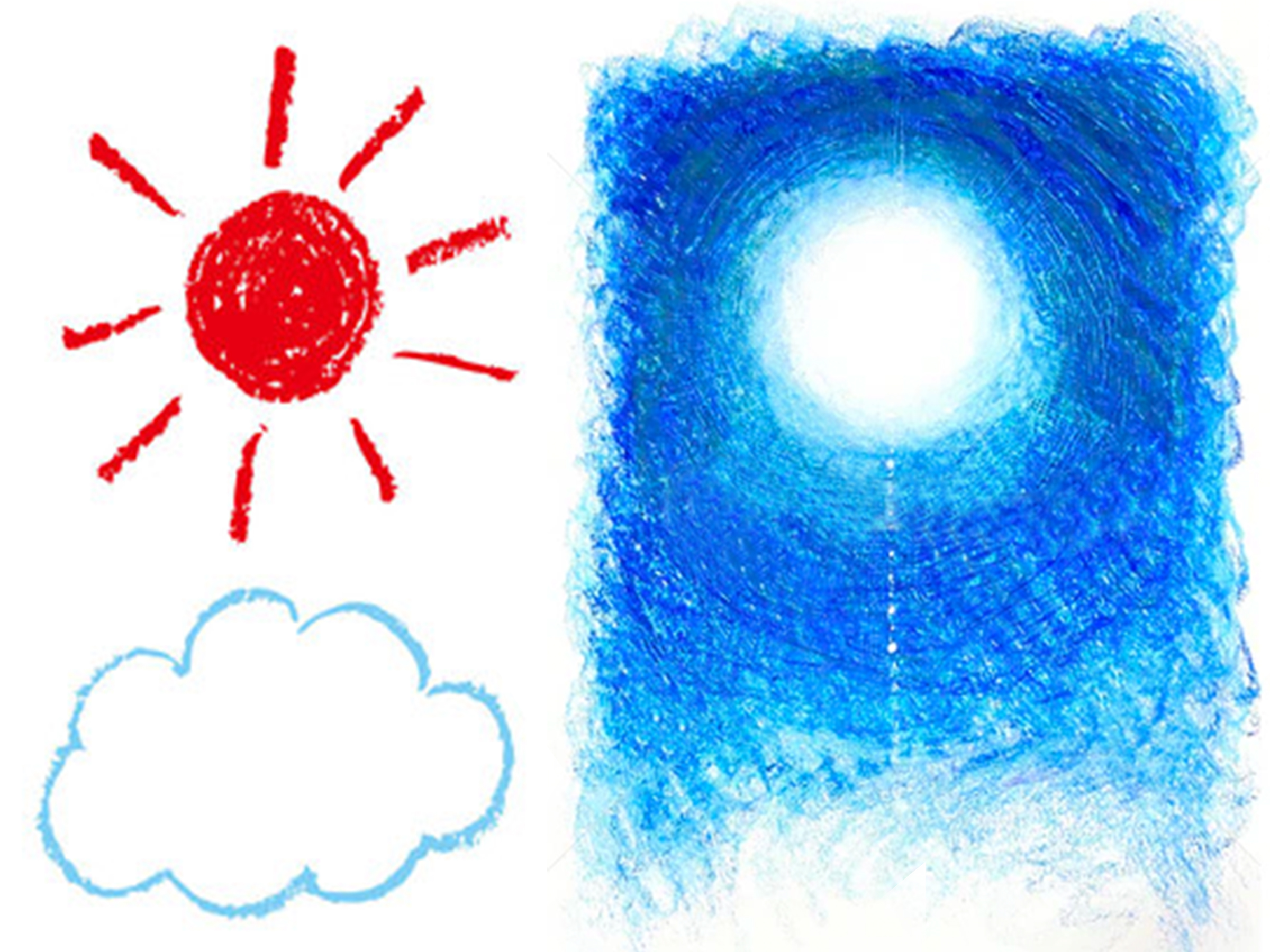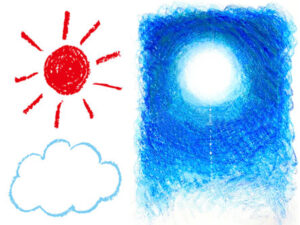Since my kindergarten years, there has always been something that puzzled me.
The teacher would say,
“Okay everyone, let’s draw the sun as a red circle. And don’t forget to add little lines around it to make it look like it’s shining,”
teaching every child in the class to draw it the exact same way.
But I always felt resistance toward those instructions.
How could she confidently decide that the sun is red?
To me, it looked more like a white light, and most of the time its shape didn’t appear as a clear circle at all.
As a 5- or 6-year-old, I simply couldn’t accept that kind of one-sided assumption.
The “Red Sun” Was Not the Sun I Saw — It Was a Symbol
Later, when I studied art education, I realized something.
The sun taught in kindergarten is not based on visual observation — it is a symbol.
The “red circle” is used simply because it’s easy for children to draw, easy to standardize, and easy for teachers to explain.
But the real sun changes color depending on season and time of day.
Its edges blur due to its brightness,
and depending on atmospheric light, it can look white, yellow, or even pale.
I reacted strongly to this instability of reality.
Why Did I Resist It? — Psychologically, It Was High Visual Sensitivity
From a psychological perspective,
children who feel discomfort toward symbolic representations like I did
are said to have very high visual sensitivity.
- They perceive shapes as phenomena, not as symbols.
- They are sensitive to changes in light.
- What they actually see takes priority over the “correct” way they are told to draw.
This trait is often seen in artists and designers.
Looking back now as an adult,
I think I already had my own framework for how I wanted to see the world.
Why I Struggled With “Drawing the Same Way as Everyone Else”
In kindergarten, drawing the same way as everyone else is treated as the “correct” approach.
But for me,
“I want to draw what I actually see,”
“I want to put lines on paper exactly as I feel them,”
was far more important.
Every time I saw the red circle sun,
I kept asking myself internally,
“Is this really the sun?”
Now I know that this wasn’t rebellion—
it was a strong desire to align observation with expression.
The Discomfort Toward the Sun Was the Beginning of My Artistic Sense
In art education, artistic sense is not about technique.
It is defined as
“how one sees the world, and the impulse to give that perception a form.”
My younger self wanted to verify the world with my own eyes.
Whether the sun was a red circle didn’t matter to me.
What mattered was:
How does it look to me?
That discomfort became the foundation of who I am today—
a calligrapher, an artist.
A Child’s Artistic Sense Is Their Identity
What I now understand is that a child’s way of seeing the world has no right or wrong, no better or worse.
Yet in kindergarten and school,
teachers inevitably tend to teach “easy-to-draw shapes,”
which can sometimes crush the earliest buds of a child’s sensibility.
So if a child says,
“The sun isn’t red,”
that isn’t wrong—it’s actually a sign of that child’s freedom of perspective.
Conclusion
As a child, I felt a deep discomfort toward the idea of a “red round sun.”
But now I understand that this was the very beginning of my artistic sense.
The color and shape of the sun are not something to be taught.
They are something each person perceives for themselves.
The feeling I had as a child—
wanting to protect my own way of seeing—
has become the source of my expression today.


